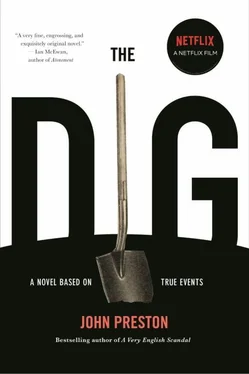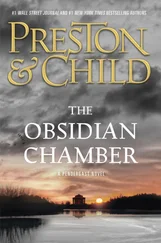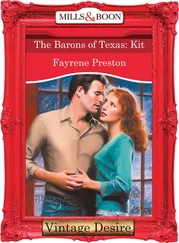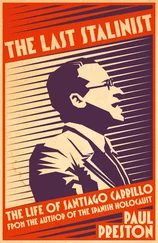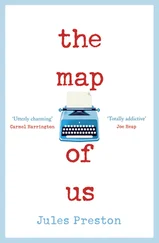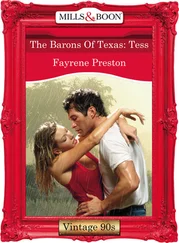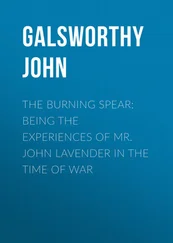She inspected the rivet for some time.
Then to my surprise she stuck out her hand. “Congratulations, Mr. Brown,” she said. She paused and, as she did so, the corners of her mouth seemed to drift upwards. “I always told you I thought there was something in there, didn’t I?”
“You certainly did, Mrs. Pretty. You certainly did…”
She also shook John’s hand and Will’s. We all stood around for a while, grinning like halfwits. By now it was past seven o’clock and we decided to pack it in for the day. Mrs. Pretty and Robert went back to the house. When we had finished covering over the trench with tarpaulins and pieces of hessian, John and Will suggested we go for a drink to celebrate. But I was too fired up to be able to take any company.
Instead, I walked down to the estuary. The cow parsley already came up to my shoulders, while the row of railings that marked out the path was all but buried under brambles. Beating my way through to the water’s edge, I sat on the bank with only a few squabbling ducks for company. There were clumps of hairy-stalked nettles, as well as a great expanse of docks with ragged holes torn in them.
A fishing boat with dark red sails made its way upriver. The only sound was the popping of wild broom pods. When I turned round I could see Sutton Hoo House up on the bluff. The light was blazing in its windows. Behind the house a few spindly pines stood out on the horizon. It reminded me of an illustration from one of the Bible Reading Fellowship books I’d had at school.
I wished May could have been sitting there beside me. Then I could have told her what had happened. I would have liked that. As it was, I just had to imagine her being there. I knew she’d be proud, although she probably wouldn’t make too much of it. That’s not her way. Even so, she’s always hoped I might make something of myself.
I stayed on the bank until I was feeling more or less straightened out. Then I went to the Lyonses’ cottage and shared some cold lamb and purple sprouting with Billy and his wife, Vera. Before going to bed, I wrote a letter to May — as well as a longer one to Maynard, giving him as detailed an account as possible of what I’d found. I also wrote to the Reverend Harris at Thornden. I felt sure that he’d be interested. By the time I signed off, I was already half-asleep.
Fortunately, the rain held off and the ground soon dried out. While the men shoveled and sieved, I crept along from one patch of pink sand to the next. Rather than carry on driving a trench into the middle of the mound, I decided to go up and over the rivets, coming down on each one from above. That way I should actually be inside the ship, rather than tunneling through the middle of it. By scooping the earth out of the inside, I hoped to keep the sandy crust of the hull intact.
That was the plan anyway. Not that I didn’t have my doubts about it. But to my relief the outline of the ribs was still there, etched into the sand. All I had to do was brush away the loose sand until I reached the hard crust where the wood had been — and then follow the lines along from one rivet to the next.
As I did so, a number of things became more clear. For a start, the ship is lying at a slant. One end is pointing downwards. Perhaps it was put in like this, or else it just sank down at one end over the years. There’s no way of telling. From the way the rivets are spreading out — they’re in lines of about seven to every three feet — I think we must have hit one end of the ship almost head-on. I still don’t know if this is the stern or the bow. I can’t say why exactly, but I’ve an inkling it’s the stern.
The deeper I go, the wider the ship becomes. It’s plain now that we’re up against a far larger thing than anyone suspected. In reply to my letter, Maynard sent me some useful details about the Snape ship-burial. That ship was forty-six feet long, nine feet nine inches in width and four feet in depth. Judging by the width so far, I reckon this one could easily be of similar size. Perhaps even bigger. However, I have kept quiet about this. I haven’t even told Mrs. Pretty. There doesn’t seem any point raising anybody’s hopes. Not at this stage.
I’ve taken to starting work at five in the morning, as soon as there’s enough light to see by. First, I smoke a pipe, pace around and have a think before climbing down the ladder into the trench. Due to the dewfall, the stratification in the soil is clearest then. Also, there’s nothing to beat the sense of having stolen a march on the day.
At eight o’clock, John and Will arrive. Soon afterwards, depending on the weather, Mrs. Pretty and Robert come to watch our progress. As I go along, I point out the rivets and pass up anything I’ve uncovered. So far, I’ve found five small pieces of turquoise-blue glass and one glazed ceramic bead, also blue.
It’s not much, I know. Less than I would have expected, even at this stage. I can’t rule out the possibility that the mound has been robbed. Although the robbers might have started digging in the wrong place, they could have changed direction as they went along. Or they might simply have struck lucky. Still, there’s no suggestion yet that the rivets have been disturbed. That must be a good sign, I keep telling myself.
When John and Will have left for the day, I work on alone for another couple of hours. Due to the angle of the light, the discolored sand shows up especially well at sunset. I can now stand at the entrance of the trench and see lines of pink patches sweeping away before me and then disappearing into the depths of the mound.
Whenever Mrs. Pretty stays inside or is driven into Woodbridge, her son comes out on his own. Robert’s a nice enough boy, eager as anything and grateful for the company, I suspect. He and Will Spooner have devised a game which they play during our tea breaks. Will has pieces of shrapnel beneath his skin — he picked them up in France when a soldier standing next to him blew himself up with a grenade. Apparently they’re not worth the bother of digging out. You can see them in his wrist and on the back of his right hand, dark blue shapes like squashed flies.
For reasons that Will is convinced have to do with the amount of moisture in the air, these pieces of metal move about. Sometimes they’re down by his knuckles. An hour later they might have crawled up under his watch strap. Their game involves the boy shutting his eyes and pointing to where he thinks one of the pieces of metal might be. Then he opens them to see if he’s right. They can go on like this for ages. He never seems to tire of it.
In order to make him feel useful, I’ve taught him how to brush the earth away from the rivets. I told him — truthfully enough — that he was being trusted with a very great responsibility and that it was vital he stopped brushing the moment the earth changed color from yellow to pink. At first, he was so nervous that he could hardly hold the brush. But after just a few days he’s become quite a dab hand at it. By way of a reward, I’ve given him his own trowel. He hangs it on the peg in the hut along with the others.
In order to deter any trespassers, Mrs. Pretty suggested we should cordon off the site. She asked me what I thought and I agreed it was a good idea. One evening, Billy Lyons brought stakes, ropes and a sledgehammer. The four of us erected a rough fence around the mound.
When we had finished, Billy hung a sign that he’d written in big white letters from the rope: DANGER! LIVE BOMBS!
“There,” he said. “That should keep the buggers away.”
All the time I’ve been waiting for the rivets to spread out to their furthest point, then start narrowing again. But they just keep on getting wider. I’m now twenty-five feet in from the first rivets, as well as nine feet below the original ground level. In order to give ourselves enough room, we’ve also had to widen the trench. This is now fully forty feet from one side to the other.
Читать дальше
